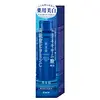What's inside
What's inside
 Key Ingredients
Key Ingredients

 Benefits
Benefits

 Concerns
Concerns

No concerns
 Ingredients Side-by-side
Ingredients Side-by-side

Ascorbyl Glucoside
AntioxidantTranexamic Acid
AstringentCeramide AP
Skin ConditioningOryza Sativa Bran Extract
Skin ConditioningPaeonia Officinalis Flower Extract
TonicSecale Cereale Seed Extract
AbrasiveGlycine Soja Extract
Skin ConditioningHydrolyzed Conchiolin Protein
Skin ConditioningHydrolyzed Silk
HumectantBis-Ethoxydiglycol Cyclohexane 1,4-Dicarboxylate
EmollientButylene Glycol
HumectantGlycerin
HumectantPotassium Hydroxide
BufferingHydrogenated Castor Oil
EmollientHedta
AbsorbentPolysorbate 20
EmulsifyingSodium Citrate
BufferingCitric Acid
BufferingPolyvinylalcohol Crosspolymer
Sodium Metabisulfite
AntioxidantDehydroacetic Acid
PreservativePhenoxyethanol
PreservativeSodium Paraben
PreservativeWater
Skin ConditioningAscorbyl Glucoside, Tranexamic Acid, Ceramide AP, Oryza Sativa Bran Extract, Paeonia Officinalis Flower Extract, Secale Cereale Seed Extract, Glycine Soja Extract, Hydrolyzed Conchiolin Protein, Hydrolyzed Silk, Bis-Ethoxydiglycol Cyclohexane 1,4-Dicarboxylate, Butylene Glycol, Glycerin, Potassium Hydroxide, Hydrogenated Castor Oil, Hedta, Polysorbate 20, Sodium Citrate, Citric Acid, Polyvinylalcohol Crosspolymer, Sodium Metabisulfite, Dehydroacetic Acid, Phenoxyethanol, Sodium Paraben, Water
Potassium Methoxysalicylate
BleachingGlutamic Acid
HumectantAlanine
MaskingMethionine
Skin ConditioningCentella Asiatica Extract
CleansingSodium Acetylated Hyaluronate
HumectantSodium Hyaluronate
HumectantSoluble Collagen
HumectantGlycerin
HumectantWater
Skin ConditioningDipropylene Glycol
HumectantAlcohol Denat.
AntimicrobialButylene Glycol
HumectantPEG/PPG-14/7 Dimethyl Ether
Skin ConditioningPEG-7 Glyceryl Cocoate
EmulsifyingXylitol
HumectantDiglycerin
HumectantPolyglyceryl-3 Decyltetradecyl Ether
EmulsifyingPolyvinylalcohol Crosspolymer
Trimethylpyrazine
PerfumingXanthan Gum
EmulsifyingPotassium Hydroxide
BufferingErythritol
HumectantDisodium EDTA
2-O-Ethyl Ascorbic Acid
Skin ConditioningPhenoxyethanol
PreservativeParfum
MaskingPotassium Methoxysalicylate, Glutamic Acid, Alanine, Methionine, Centella Asiatica Extract, Sodium Acetylated Hyaluronate, Sodium Hyaluronate, Soluble Collagen, Glycerin, Water, Dipropylene Glycol, Alcohol Denat., Butylene Glycol, PEG/PPG-14/7 Dimethyl Ether, PEG-7 Glyceryl Cocoate, Xylitol, Diglycerin, Polyglyceryl-3 Decyltetradecyl Ether, Polyvinylalcohol Crosspolymer, Trimethylpyrazine, Xanthan Gum, Potassium Hydroxide, Erythritol, Disodium EDTA, 2-O-Ethyl Ascorbic Acid, Phenoxyethanol, Parfum
Ingredients Explained
These ingredients are found in both products.
Ingredients higher up in an ingredient list are typically present in a larger amount.
Butylene Glycol (or BG) is used within cosmetic products for a few different reasons:
Overall, Butylene Glycol is a safe and well-rounded ingredient that works well with other ingredients.
Though this ingredient works well with most skin types, some people with sensitive skin may experience a reaction such as allergic rashes, closed comedones, or itchiness.
Learn more about Butylene GlycolGlycerin is already naturally found in your skin. It helps moisturize and protect your skin.
A study from 2016 found glycerin to be more effective as a humectant than AHAs and hyaluronic acid.
As a humectant, it helps the skin stay hydrated by pulling moisture to your skin. The low molecular weight of glycerin allows it to pull moisture into the deeper layers of your skin.
Hydrated skin improves your skin barrier; Your skin barrier helps protect against irritants and bacteria.
Glycerin has also been found to have antimicrobial and antiviral properties. Due to these properties, glycerin is often used in wound and burn treatments.
In cosmetics, glycerin is usually derived from plants such as soybean or palm. However, it can also be sourced from animals, such as tallow or animal fat.
This ingredient is organic, colorless, odorless, and non-toxic.
Glycerin is the name for this ingredient in American English. British English uses Glycerol/Glycerine.
Learn more about GlycerinPhenoxyethanol is a preservative that has germicide, antimicrobial, and aromatic properties. Studies show that phenoxyethanol can prevent microbial growth. By itself, it has a scent that is similar to that of a rose.
It's often used in formulations along with Caprylyl Glycol to preserve the shelf life of products.
We don't have a description for Polyvinylalcohol Crosspolymer yet.
Potassium hydroxide is commonly known as caustic potash. It is used to fix the pH of a product or as a cleaning agent in soap. In cleansers, it is used for the saponification of oils.
Sapnification is the process of creating fatty acid metal salts from triglycerides and a strong base. During this process, Potassium Hydroxide is used up and is not present in the final product.
Using high concentrations of Potassium Hydroxide have shown to irritate the skin.
Learn more about Potassium HydroxideWater. It's the most common cosmetic ingredient of all. You'll usually see it at the top of ingredient lists, meaning that it makes up the largest part of the product.
So why is it so popular? Water most often acts as a solvent - this means that it helps dissolve other ingredients into the formulation.
You'll also recognize water as that liquid we all need to stay alive. If you see this, drink a glass of water. Stay hydrated!
Learn more about Water